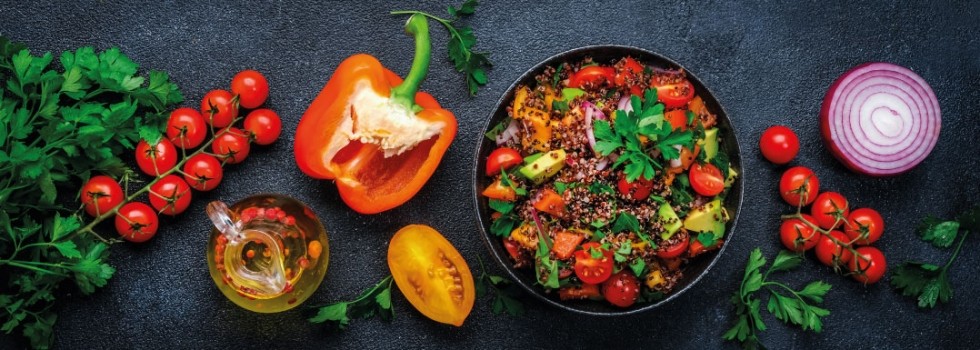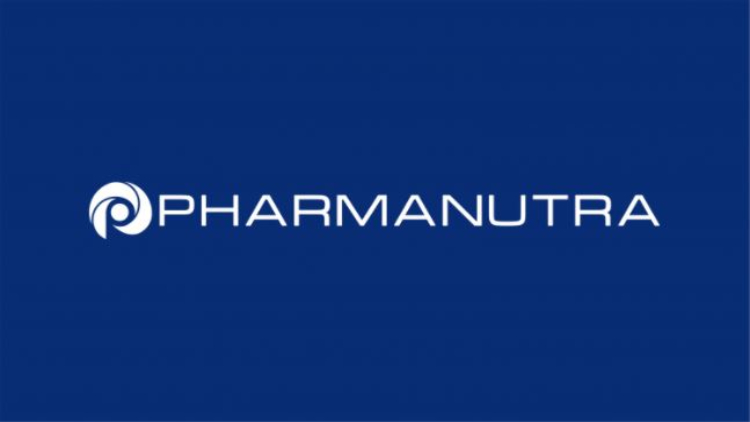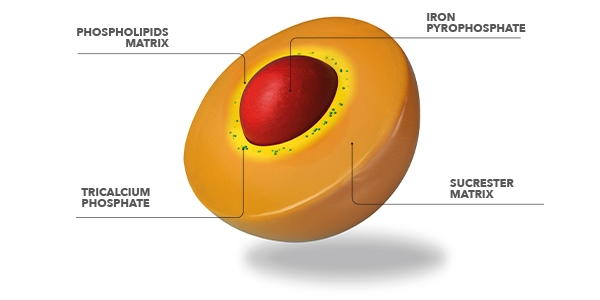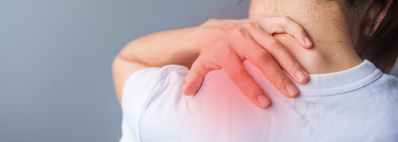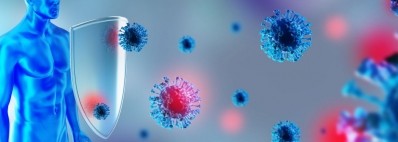Promotional Features
Reducing the risk of iron deficiency in plant-based diets
In recent years, vegetarian and vegan diets have spread widely throughout the world, becoming integrated into people’s lifestyles.
The term vegetarianism refers to the practice of eliminating meat and animal products from the diet.
Vegetarian diets can be divided into six different types, as shown in the figure below:
Type of diet | Nature of diet (all are devoid of flesh foods) |
Vegetarian | May or may not include egg or dairy products. |
Lacto-ovo_vegetarian | Includes eggs and dairy products. |
Lacto_vegetarian | Includes dairy, but not egg products. |
Ovo-vegetarian | Includes eggs and egg products, but not dairy. |
Vegan | Excludes eggs and dairy products and may exclude honey. |
Raw vegan | Based on vegetables, fruit, nuts and seeds, legumes, and sprouted grains. The amount of uncooked food varies from 75% to 100%. |
These diets exclude the consumption of all types of meat (for example, pork, beef, and lamb) and products such as fish, shellfish and crustaceans. The nutritional profiles of vegetarian and vegan diets vary greatly and, in broad terms, it could be discerned that nutritional deficits can arise from these two types of diets on the basis of the food compositions that characterize them.
Some scientific studies have shown that those who follow these diets can be more likely to develop nutritional deficiencies, in particular iron, zinc, iodine, selenium, calcium, essential fatty acids, omega-3, vitamin B2, vitamin B12, and vitamin D.1
Dietary iron sources
Iron is an essential mineral for the health of the body, as it is responsible for some of its metabolic processes, in particular:
- At bone marrow level, to produce new red blood cells
- To transport oxygen in the body
- To promote the synthesis of lipids, carbohydrates and genetic material (DNA)
When iron intake is not sufficient, due to a poorly balanced diet or an increase in need, there may be a risk of developing a condition of an iron deficiency, also called sideropenia. If not promptly corrected, this can lead to a clinical picture known as iron deficiency anemia (IDA).
Foods rich in iron include liver, offal, seafood, various meats (specifically horse meat), fish, some types of green vegetables (especially Brussels sprouts and spinach), legumes (beans), nuts (including almonds and dried figs) and cocoa.
The bioavailability of iron in diets varies greatly from one person to the next. In vegetarian and vegan diets, the iron intake is usually lower than in the omnivorous diet. The reason for the reduced absorption of iron lies in its mechanism of absorption, as this mineral is found in two food forms: heme iron (bivalent) and non-heme iron (trivalent).
The body can more easily absorb the bivalent iron, contained in meat and fish, than the trivalent iron present in vegetables and eggs. The average absorption of bivalent iron from meat-containing meals is about 25%. In vegetarian diets, however, the bioavailability of trivalent iron is lower, equal to 5-10%, due to a high intake of foods containing phytates and polyphenols.2
Phytates are found in all types of cereals, seeds, nuts, vegetables, roots (for example potatoes) and fruits. Even in small quantities, these substances strongly inhibit iron absorption in a dose-dependent manner. For example, bran has a high content of phytates that, by binding to iron, does not make it "free" and thus inhibits its absorption. Phytates form complexes with iron as well as other essential minerals such as zinc, magnesium and calcium.
The accompanying intake of calcium with iron reduces the absorption of the latter. To limit this interference, practical solutions may include increasing iron intake, increasing its bioavailability, and avoiding calcium-rich foods and iron-rich foods at the same meal. The mechanism of action for inhibition of absorption is unknown, but some evidence suggests that the inhibitory effect occurs within the intestinal cell itself. Recent dose-effect analyses show that the first 40mg of calcium in a meal does not inhibit dietary iron absorption, but above this calcium intake level, up to 60% inhibition of iron absorption develops.3
The demand for iron in vegan and vegetarian diets tends to be higher than those who follow other types of diet, primarily because trivalent iron in plant foods has low bioavailability. This could be increased by the parallel consumption of foods rich in vitamin C, such as oranges, lemons, strawberries and kiwifruit. For this reason, iron supplementation is often recommended in specific populations of subjects who follow these types of diets, such as premenopausal women, fertile women with abundant menstrual cycles, adolescents, pregnant women, or subjects with a chronic inflammatory condition.
To reduce the risk of iron deficiency, it is recommended to monitor iron levels regularly. In the event of a deficiency, or an increase in iron requirements, a doctor or nutritionist may also recommend the use of a dietary supplement to restore the correct physiological values of iron.
Advances in iron supplementation technology
Numerous iron-based supplements are on the market, but not all of them contain the same source of iron. The bioavailability of the iron varies depending on its chemical nature, similar to food iron.
Iron is characterized by a metallic aftertaste in the mouth and, once in contact with the gastric mucosa, can give rise to unpleasant effects such as pain, nausea and constipation.
SiderAL® products contain Sucrosomial® iron (iron pyrophosphate) which is protected by a matrix of phospholipids and sucrose esters of fatty acids. All these elements take part in a single structure, called Sucrosome® (Figure 1).
The innovation of the Sucrosomial® technology is characterized by a good tolerability which allows the intake of iron at any time of the day – with or without food. Its effects extend for long periods of time and prevents any typical discomfort commonly associated with iron intake, such as unpleasant metallic aftertaste, irritation of the gastric mucosa, nausea or constipation. Overcoming the limits linked to the conventional integration of iron, the Sucrosomial® Iron can support the intake of this important nutrient during instances of deficiency or increased iron requirements.
Well-designed vegetarian and vegan diets can be nutritionally balanced and beneficial. However, if these diets are not carefully planned, incorporating specific dietary supplements may be required to prevent potential deficiencies in essential micronutrients that support optimal body functioning.
References
1. Bakaloudi, D.R.; Halloran, A.; Rippin, H.L.; et al. (2021). Intake and adequacy of the vegan diet. A systematic review of the evidence. Clinical Nutrition. 40(5):3503-3521.
2. Hurrell, R.; Egli, I. (2010). Iron bioavailability and dietary reference values. The American Journal of Clinical Nutrition. 91(5): 1461S-1467S.
3. Gaitán, D.; Flores, S.; Saavedra, P.; et al. (2011). Calcium does not inhibit the absorption of 5 milligrams of nonheme or heme iron at doses less than 800 milligrams in nonpregnant women. The Journal of nutrition. 141(9): 1652–1656.
Additional references
1. Slywitch, E.; Savalli, C.; Duarte, A.C.G.; et al. (2021). Iron Deficiency in Vegetarian and Omnivorous Individuals: Analysis of 1340 Individuals. Nutrients. 26;13(9): 2964.
2. Śliwińska, A.; Luty, J.; Aleksandrowicz-Wrona, E.; et al. (2018). Iron status and dietary iron intake in vegetarians. Advances in Clinical Experimental Medicine. 27(10): 1383-1389.
3. Pohl, A.; Schünemann, F.; Bersiner, K.; et al. (2021). The Impact of Vegan and Vegetarian Diets on Physical Performance and Molecular Signaling in Skeletal Muscle. Nutrients. 13(11): 3884.
4. L’alimentazione Nella Pratica Motoria E Sportiva.
5. Sideral.
